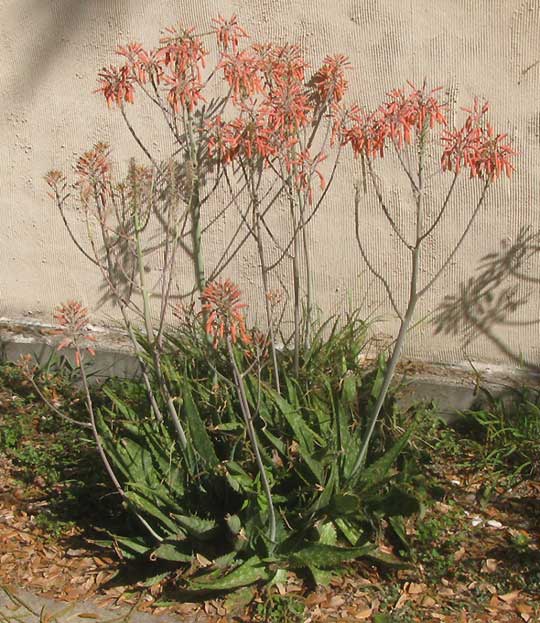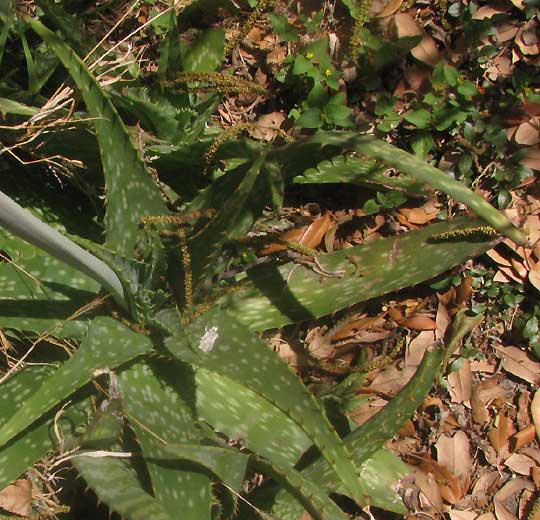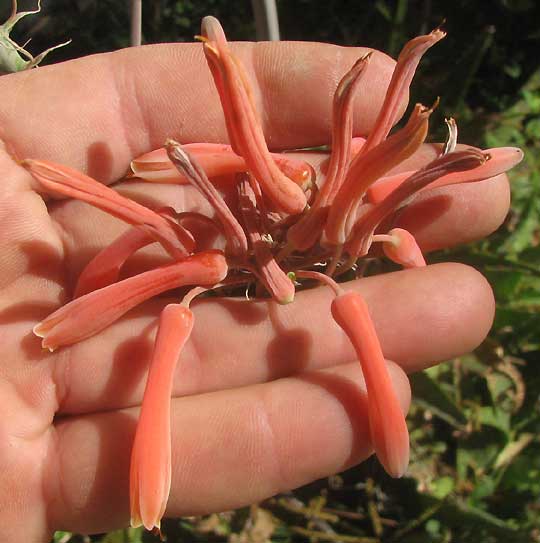Excerpts from Jim Conrad's
Naturalist Newsletter
from the May 11, 2014 Newsletter issued from the Frio Canyon Nature Education Center in the valley of the Dry Frio River in northern Uvalde County, southwestern Texas, on the southern border of the Edwards Plateau; elevation ~1750m (~5750 ft); N29.62°, W99.86°; USA
SOAP ALOE
Commonly planted along streets and next to houses and walls in Uvalde is the handsome, waist-high, agave-like plant shown below:

This plant's succulent, swordlike blades with spines on their margins and pale spots on their faces look very much like those of the famous Aloe Vera, as you can see below:

However, the flowers of Uvalde's plants are pinkish, as seen below:

Maybe you remember that flowers on Aloe Vera plants we saw so abundantly in the Yucatan were yellow, as documented on our Aloe Vera page at http://www.backyardnature.net/yucatan/aloevera.htm.
Over 500 species of the genus Aloe are recognized, however, and many are cultivated, so it's not surprising to run into something that's almost an Aloe Vera, but not. The genus Aloe is native to Africa and thereabouts, so any aloe occurring in the Americas will be planted or "gone wild."
Uvalde's close relative to Aloe Vera is ALOE SAPONARIA, often called the Soap Aloe or Zebra Aloe, originally from southern and eastern South Africa. It's much planted throughout the world in warm, dry areas. The Wikipedia expert claims that it's ".. the most popular ornamental aloe in the Tucson, Arizona area, and is also popular in California." That's certainly also the case in Uvalde.
The "saponaria" part of its binomial reflects the use of the gummy material in its leaves as a soap. Beat leaf sap in water and it forms a soapy lather.